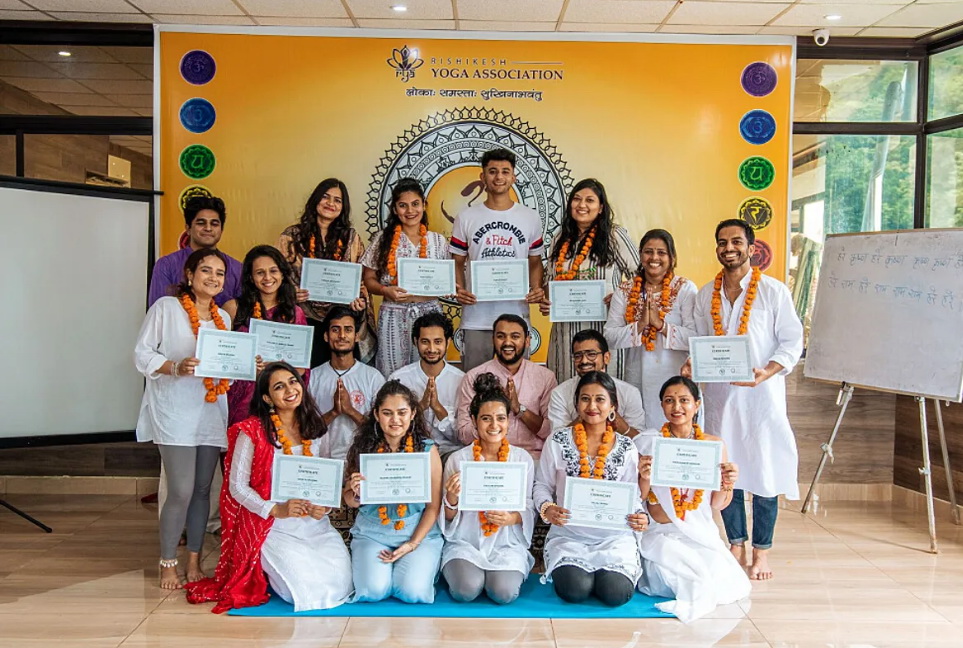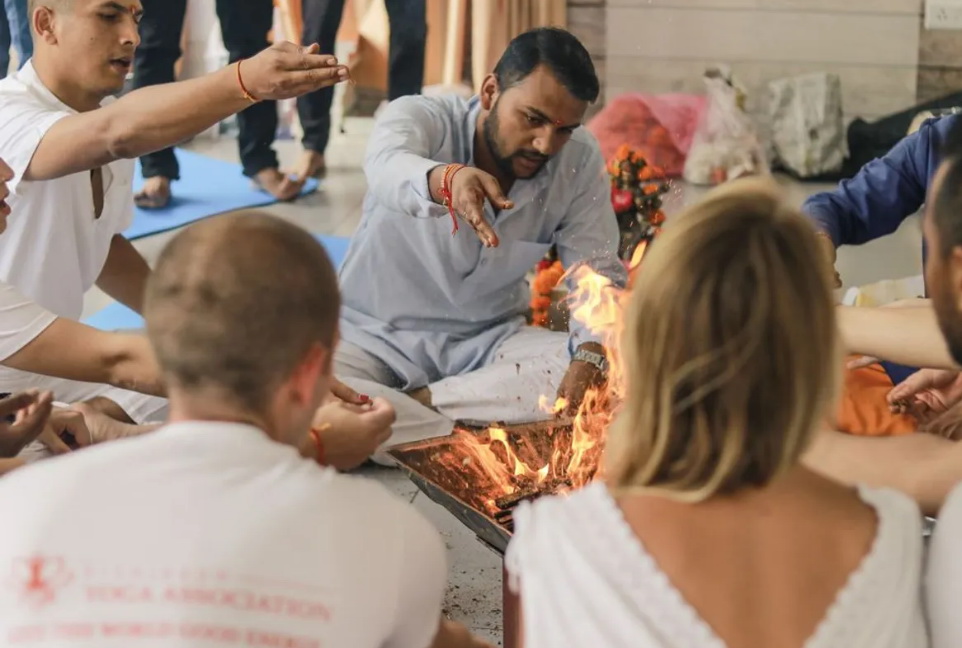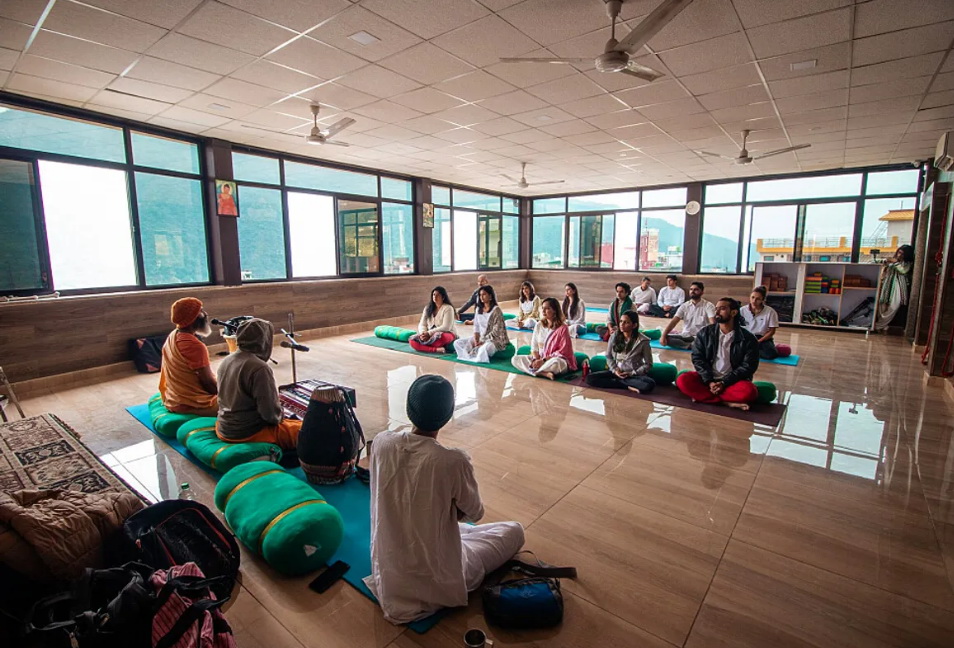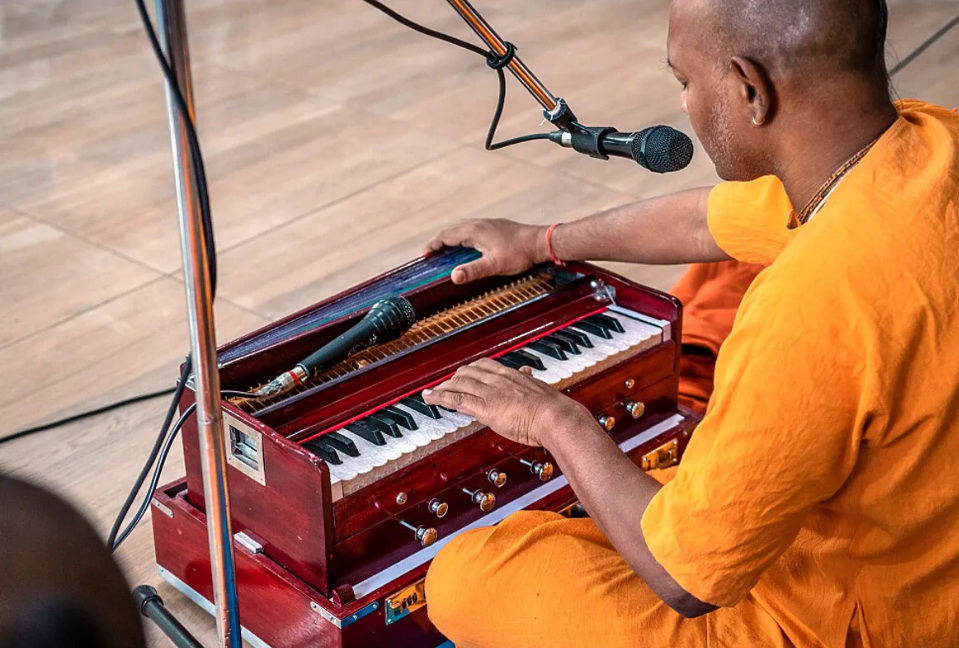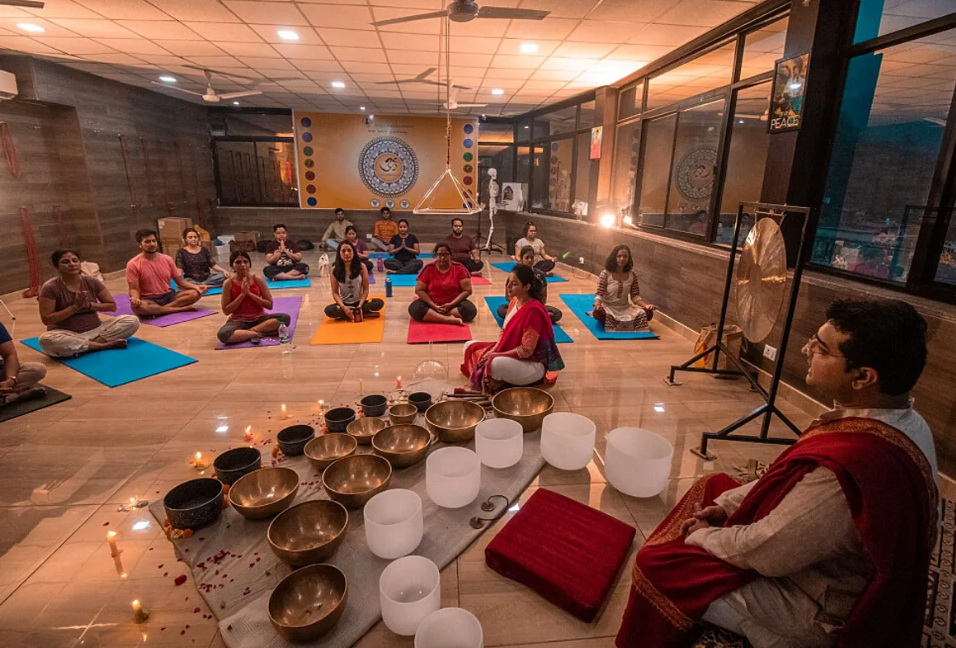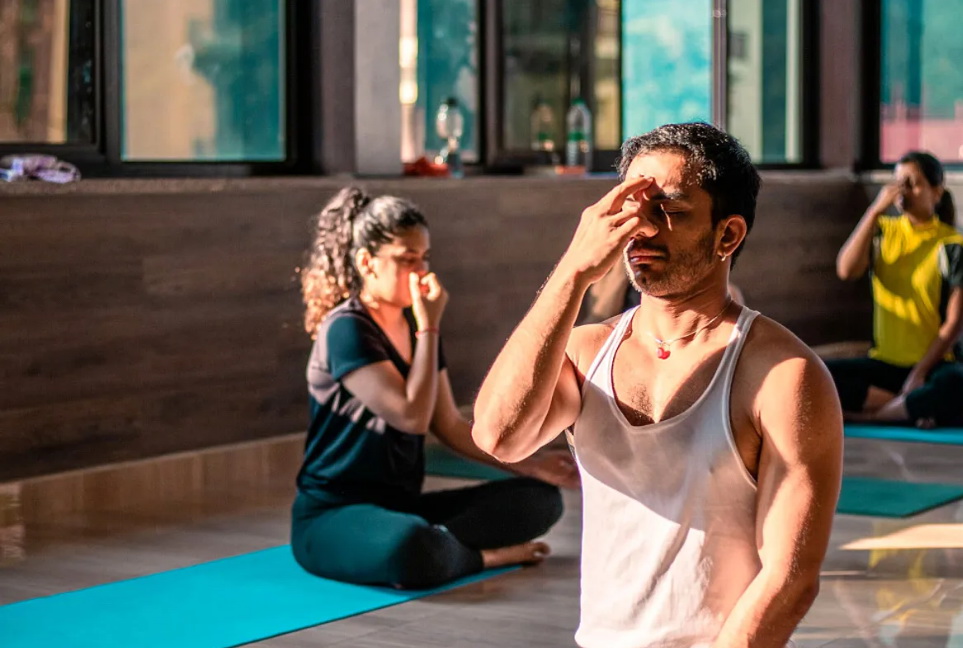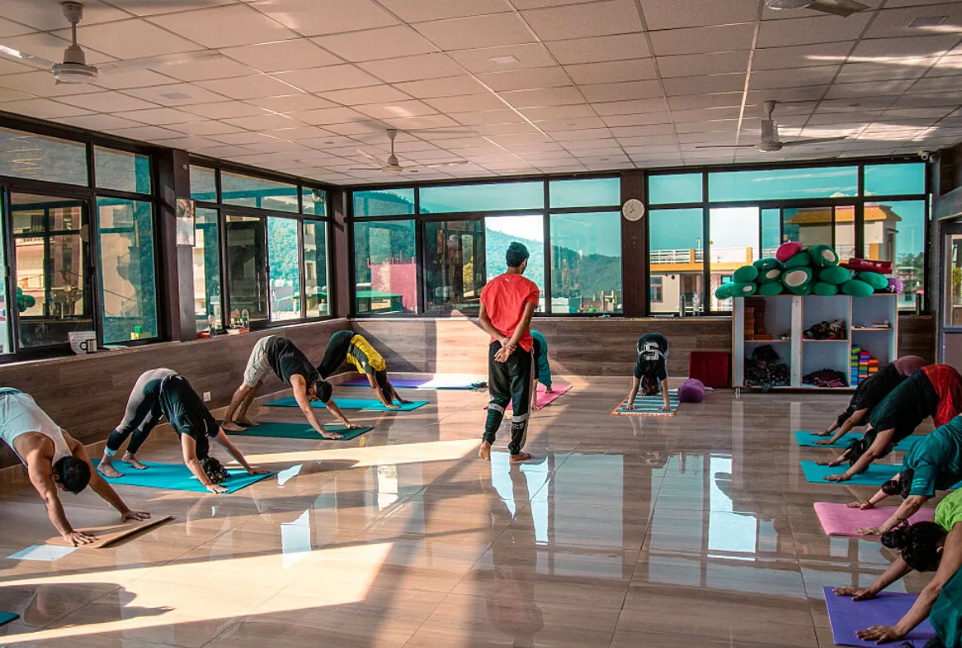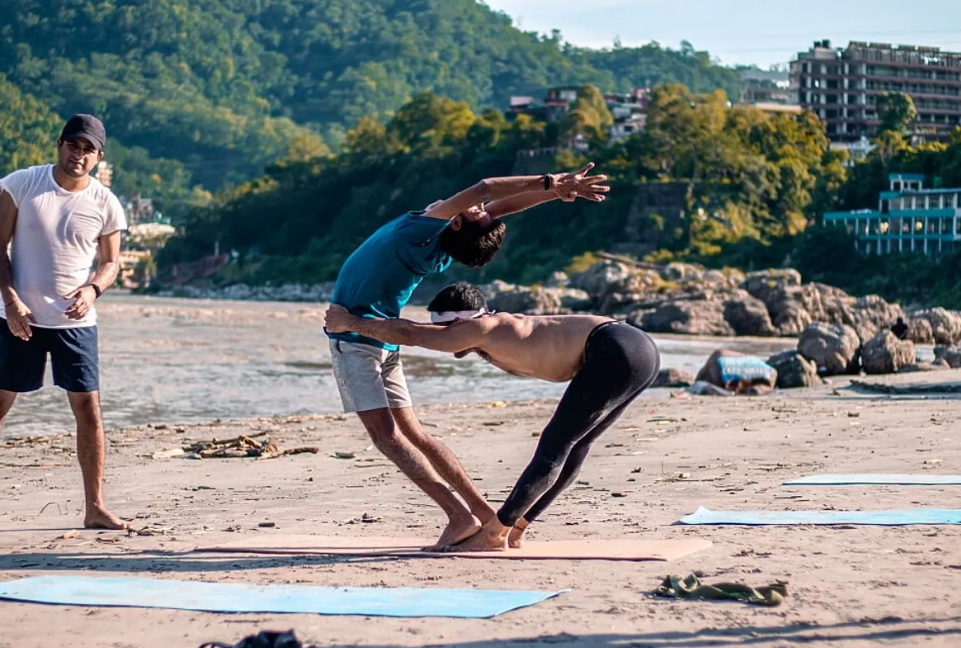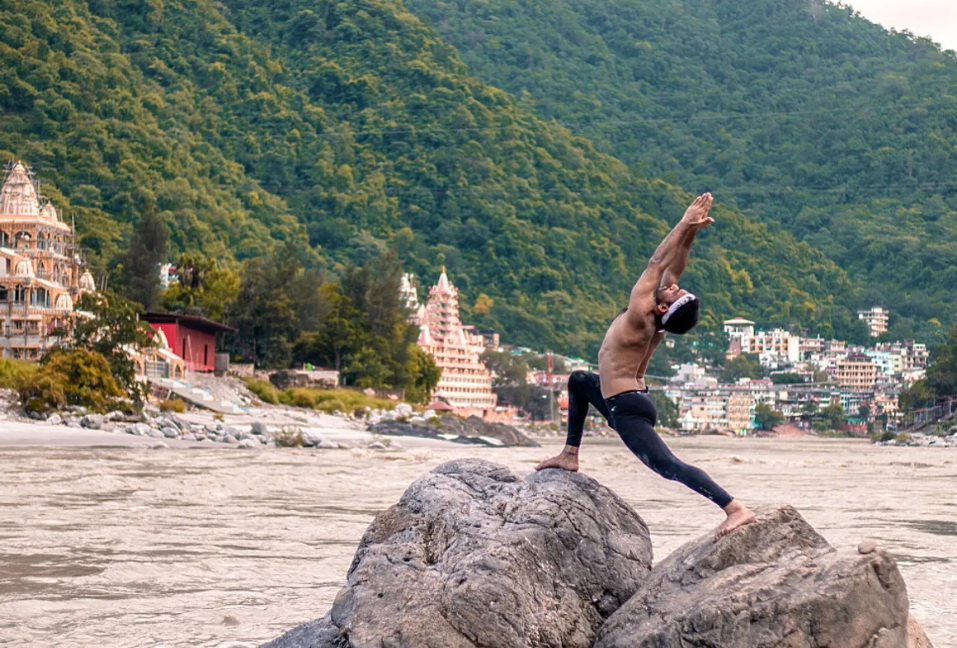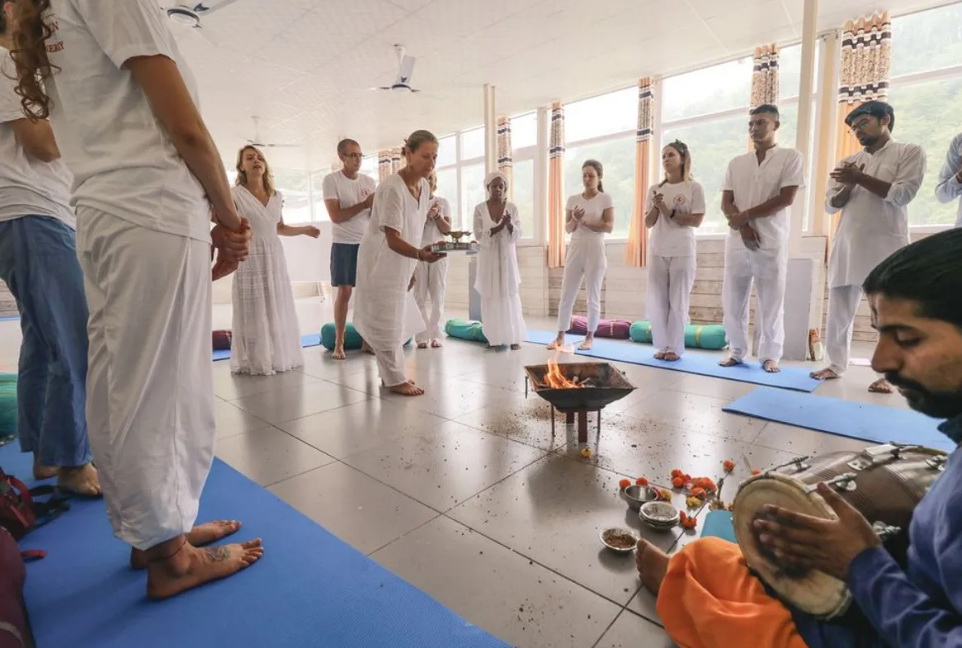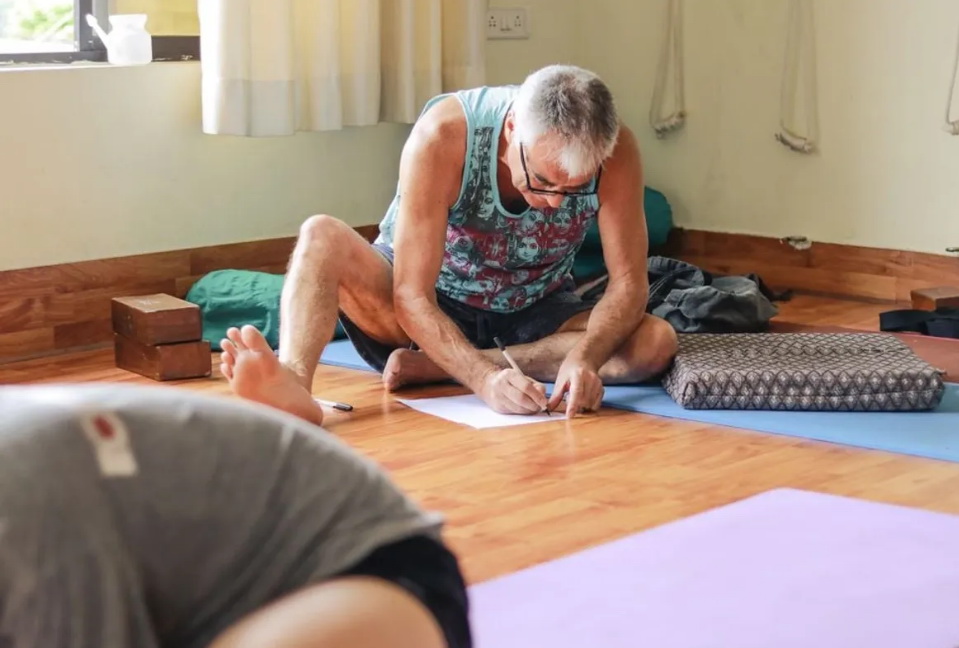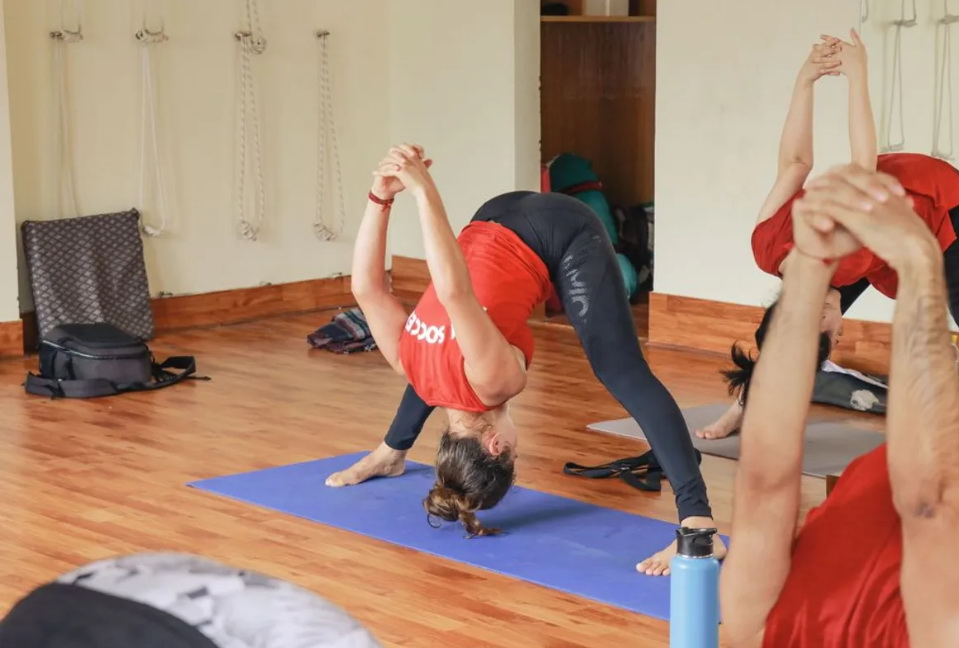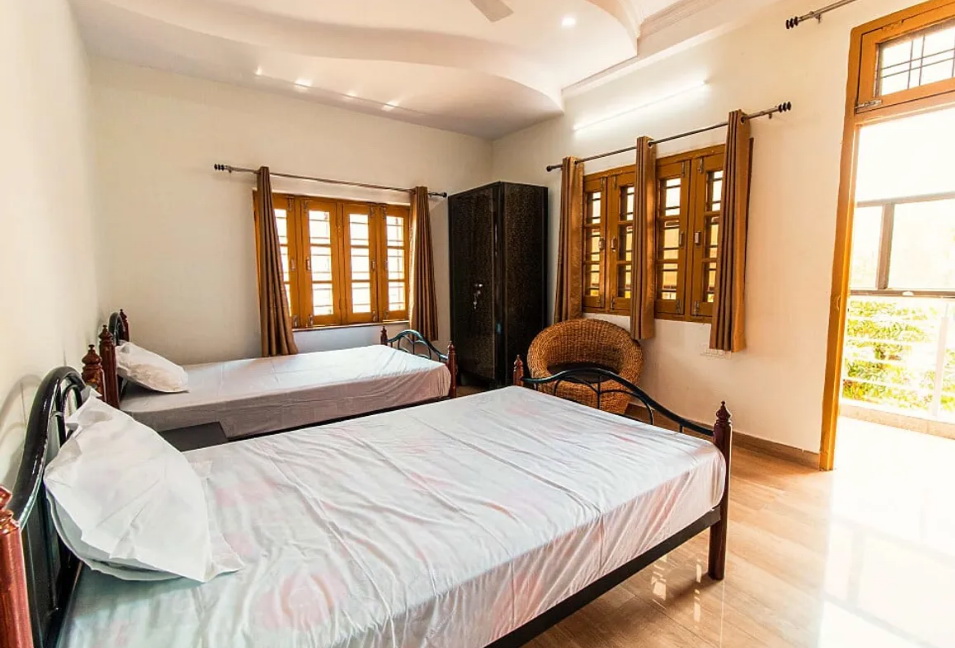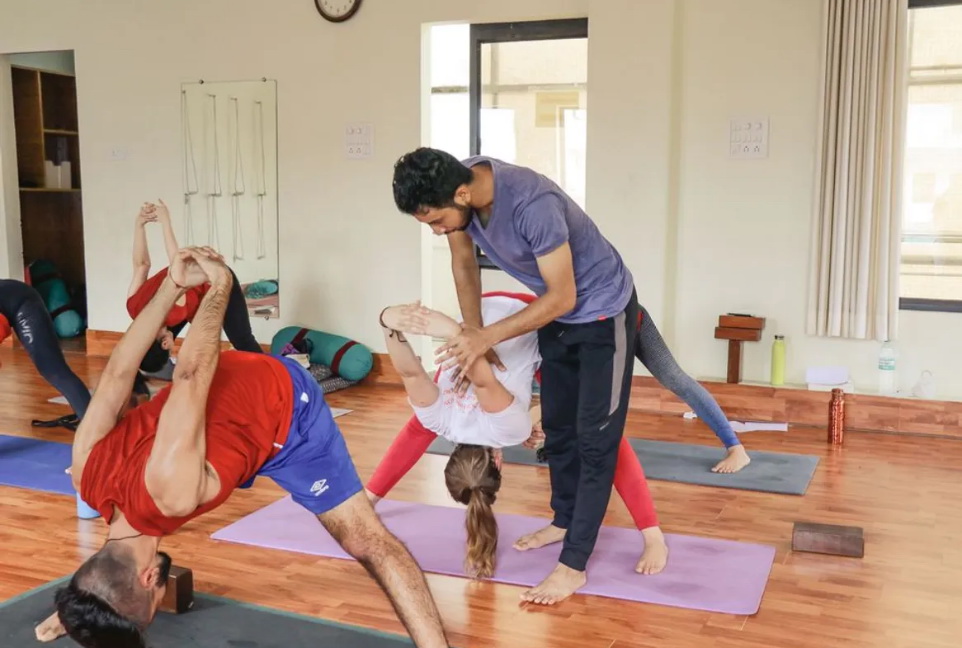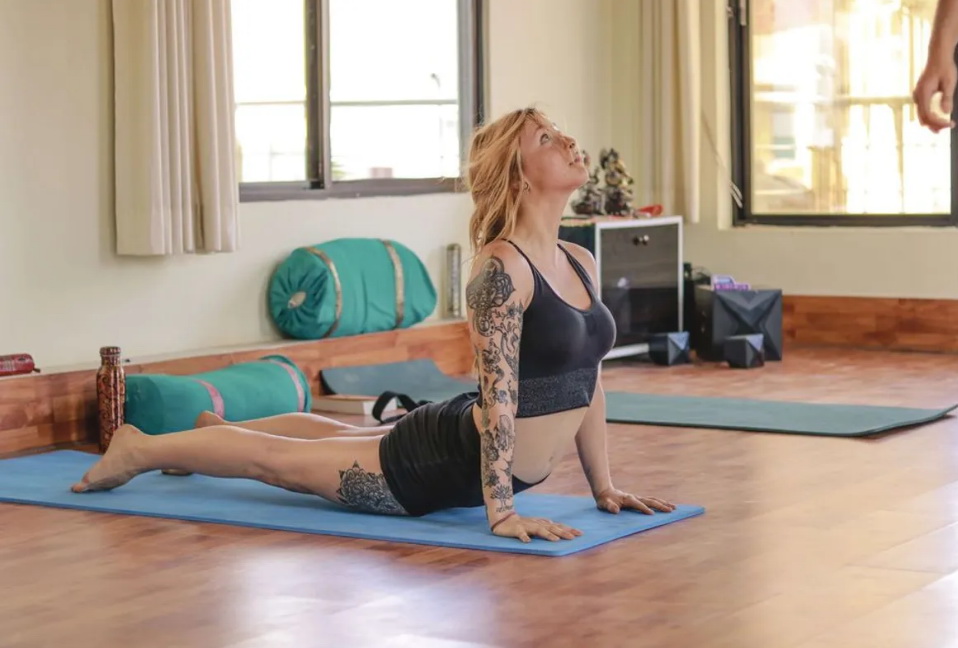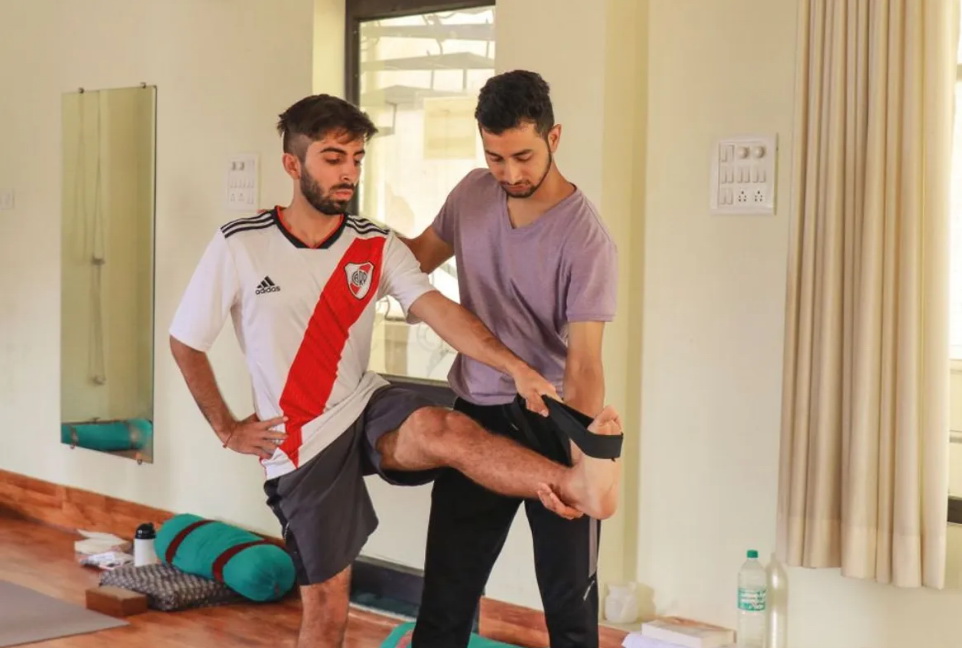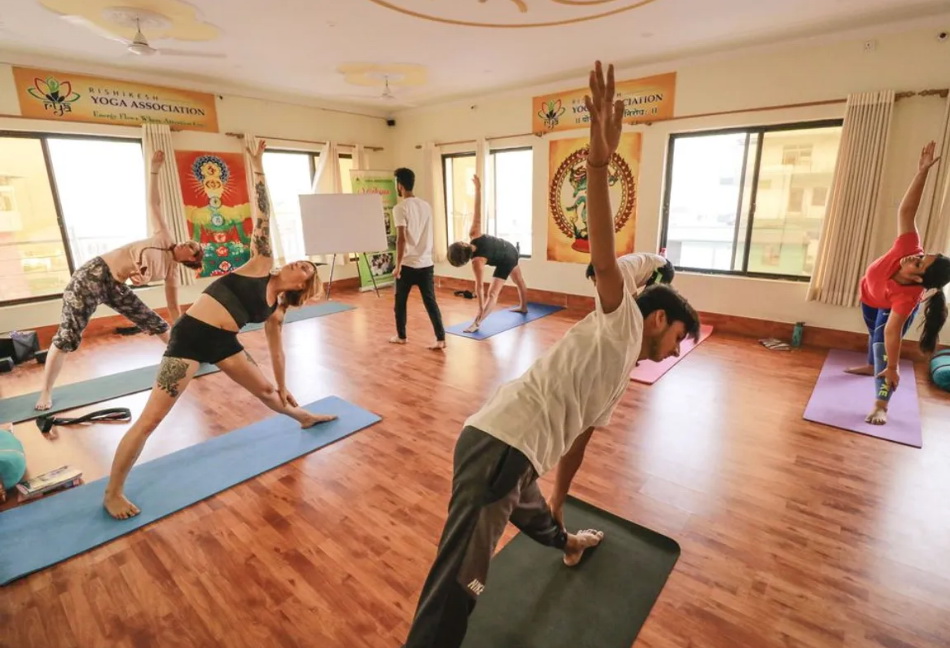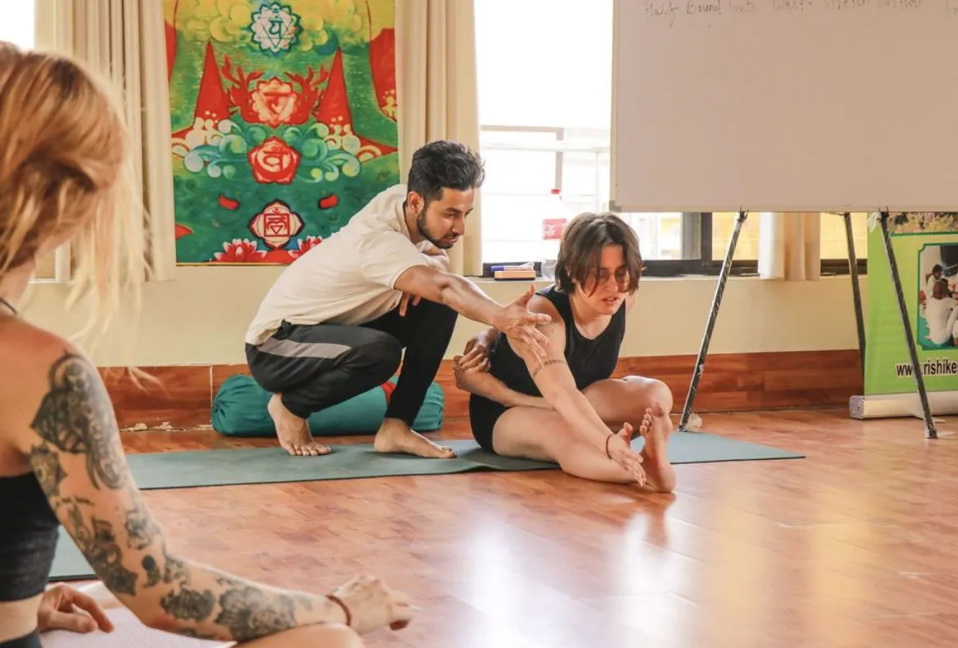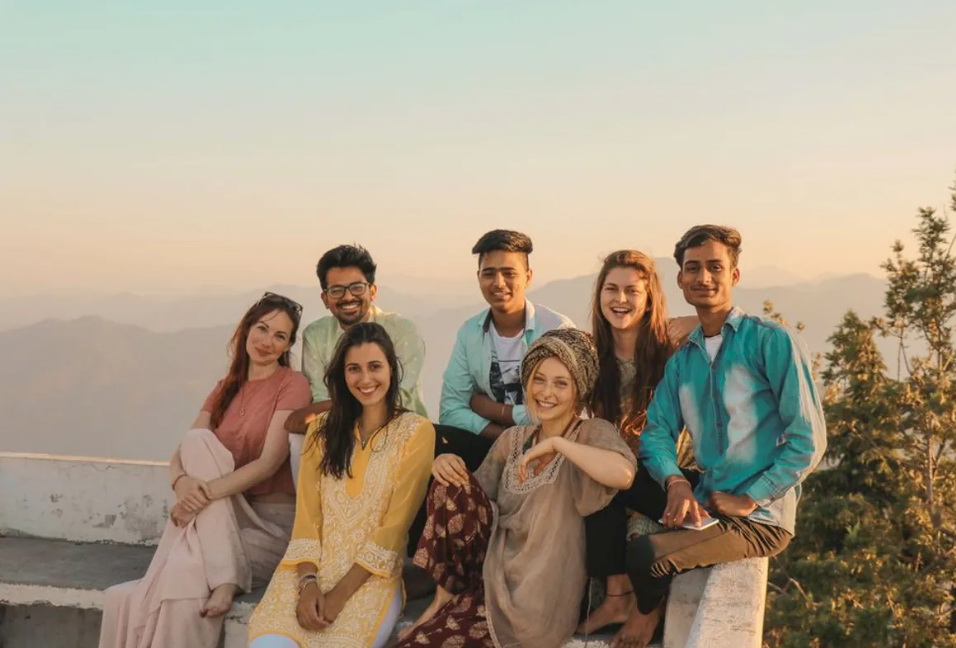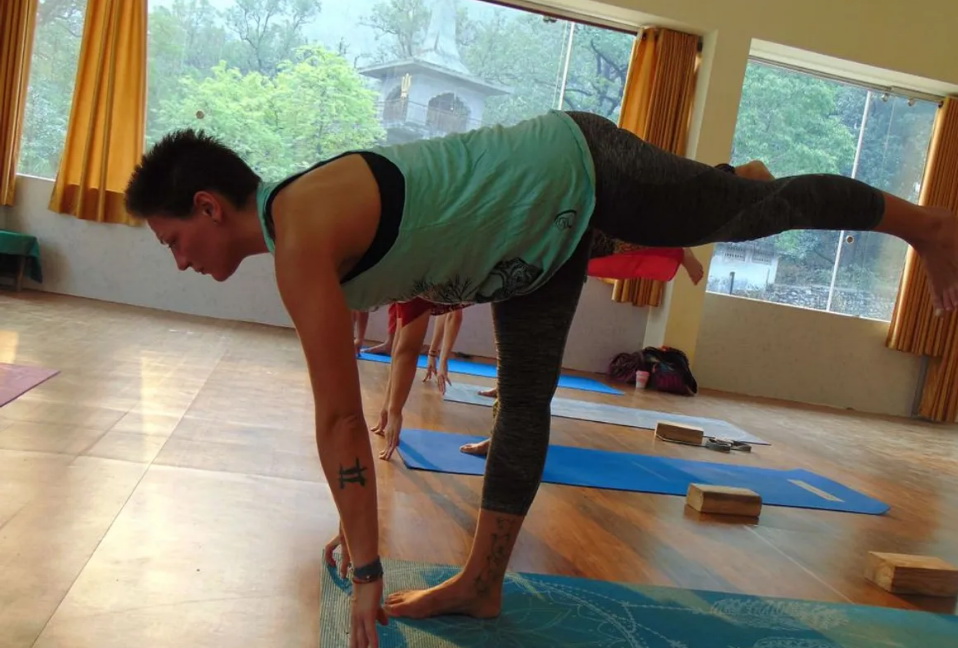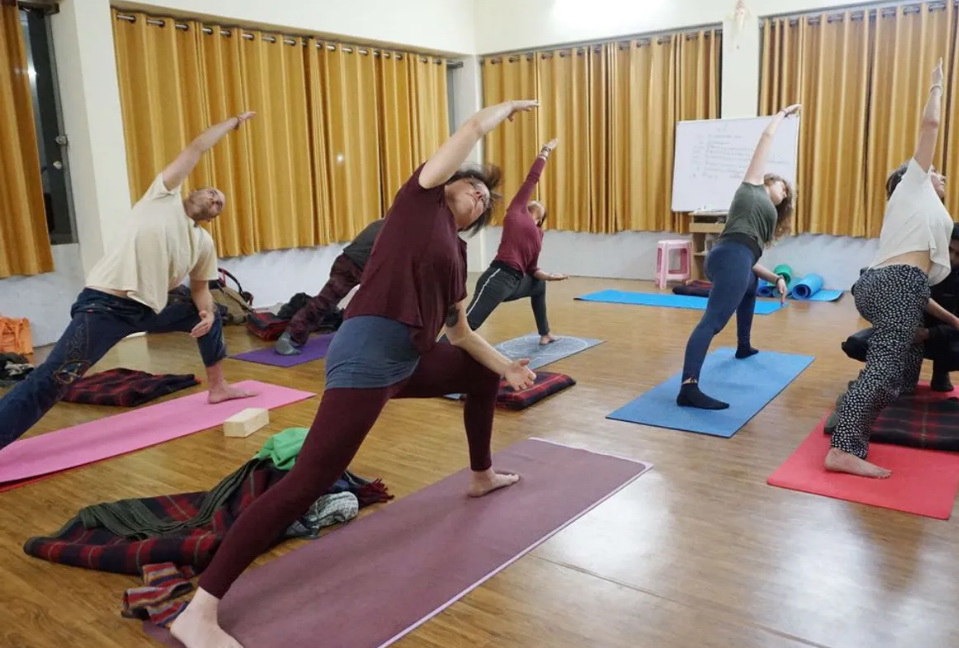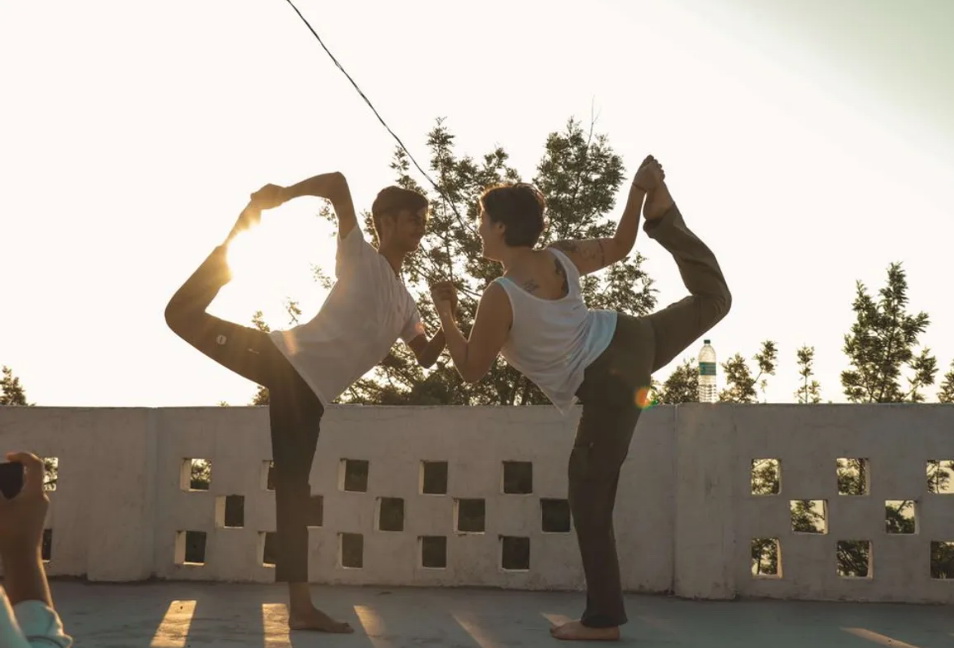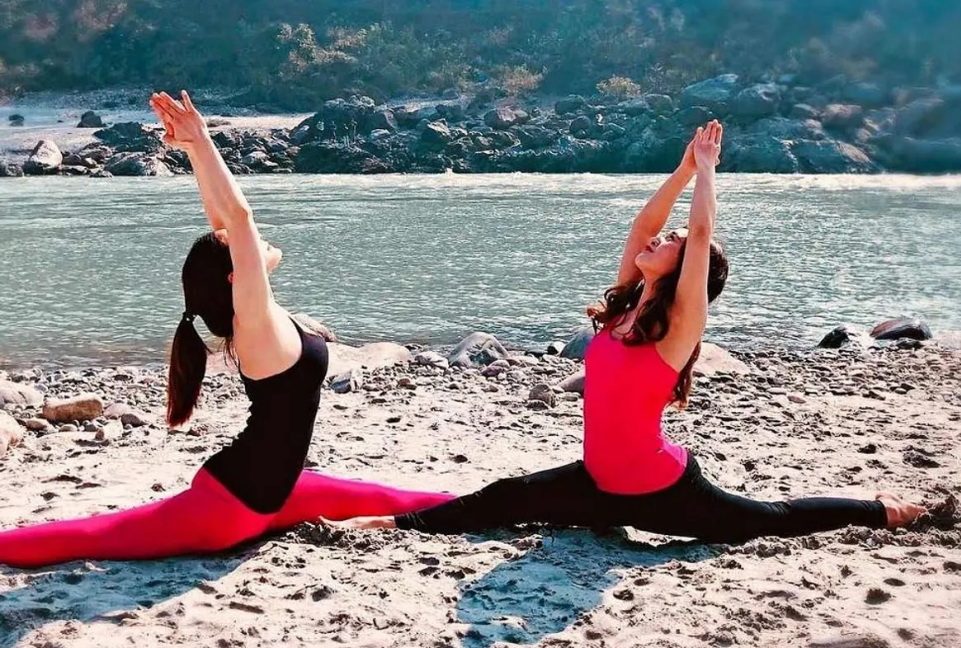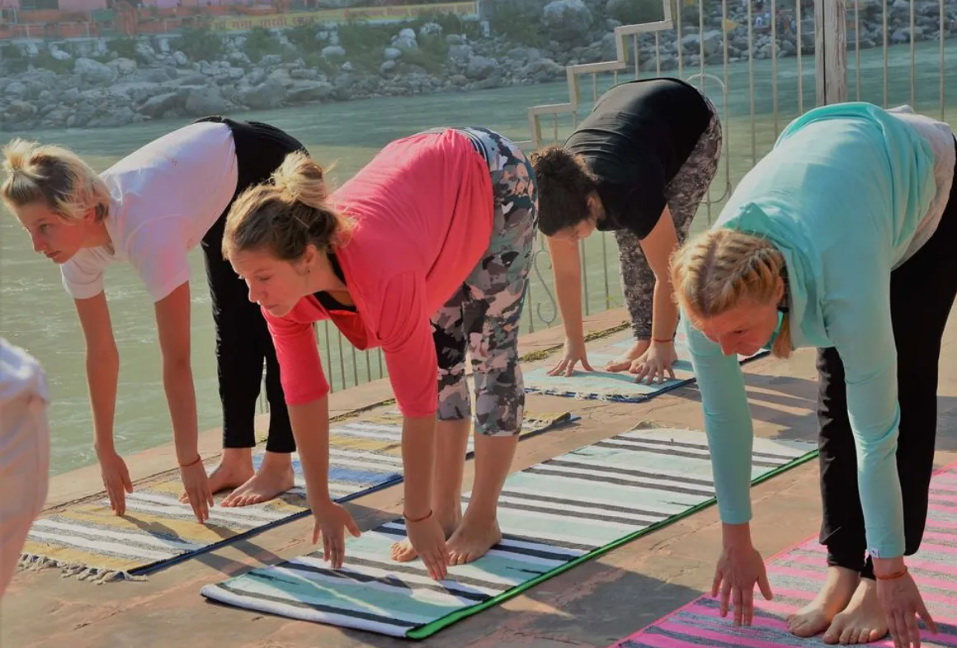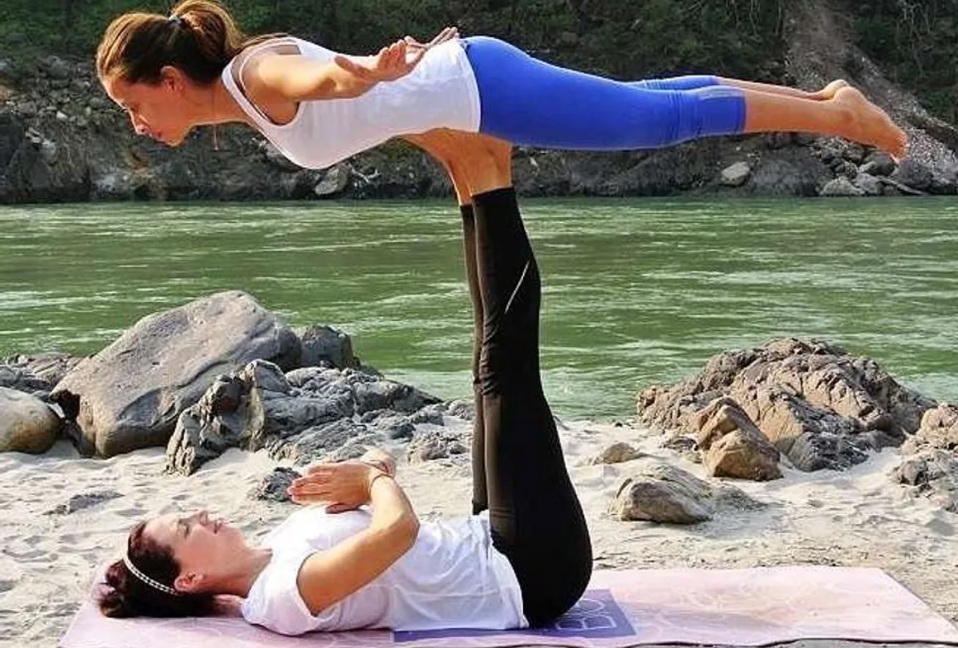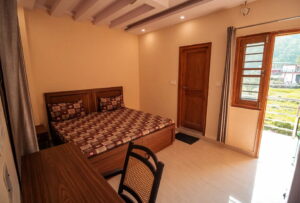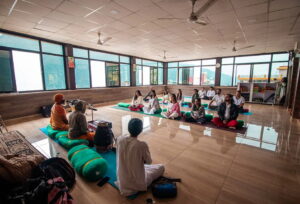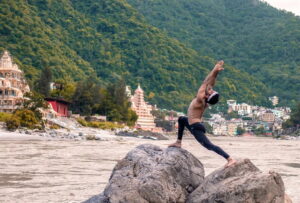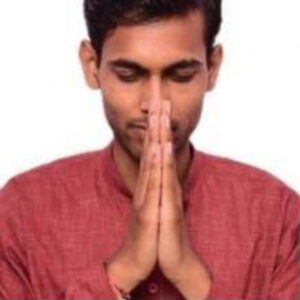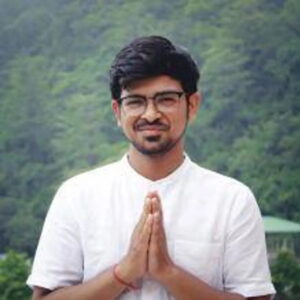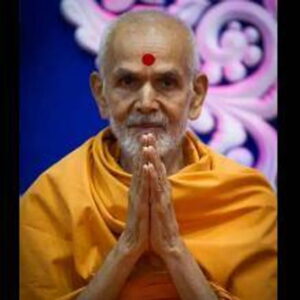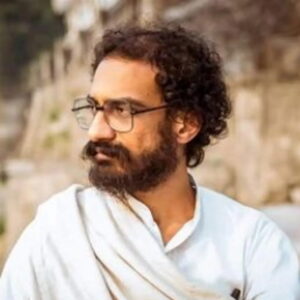Retreat category
Yoga Training retreatsRetreat style
Ashtanga Yoga.
Ayurveda Yoga.
Dynamic Yoga.
General Yoga.
Hatha Yoga.
Vinyasa YogaLanguage of instruction
EnglishRetreat Month(s)
in abbreviated form e.g: Jan 24, Feb 24, Jun 24 or e.g: all year round if applicable to your retreat
May, Jun, Jul, Aug, Sep, Oct 2023
Max. Group size
10 guestsLevel
Beginner-Intermediate-AdvancedParticipants Welcome
Solo-Couples-FamiliesMeals included
3 meals + SnackDiets available upon request
Vegetarian, Vegan, Gluten Free, Organic, Raw, Egg-free
Description
list the major aspects of your Retreat you would like to bring forward (make it concise)
Yoga is not a simple term whose knowledge can gain by just practice for a few days, indeed it is a deep ocean of knowledge where one needs to completely delve to know it better.Yoga is not only a practice but it is a power that makes you live life in your own way. In past times, you often read or heard about sages and monks who meditated for years and years to gain the true knowledge of yoga and the true power of it. Yoga is a knowledge which keeps increasing on practice.The 500 hours yoga teacher training course at Rishikesh Yoga Association aims to teach you how to teach. After the course, you will definitely be able to conduct yoga class with utmost proficiency and technique. Your fear will become your love; you will love to conduct the class.
Included in the course
Yoga AsanaIt covers two tiers; the first tier where trainees deepen their personal practice of yoga asanas and the second tier where trainees learn to teach the series of asanas.
ShatkarmaThe yogic cleansing technique, also known as Shatkarma is what you get to learn in this course. From the history to the benefits, the trainee gains the complete knowledge of it.
Personal Practice500 hours YTTC is certainly the best to improve your personal practice. It will deepen your skills and sharpen your practice to achieve the best in yoga.
Asana Alignment TechqniuesThe trainee will get to learn and develop their understanding and skills with the correct alignment techniques. They further learn to apply the use of modification and props in a yoga practice.
Asana Adjustment TechniquesThe correct adjustment of the asana is the foundation of a yoga practice. With the master level of yoga course, a trainee will get to adjust their adjusting skills under the guidance of trained and professional yoga gurus.
Class Sequencing TechniquesUnder 500 hours YTTC a trainee will get to learn, how to start and conduct a yoga class session.
Chakras & MantrasChakras and mantras are two powerful and spiritual aspects of yoga with which a trainee learn to balance and optimize the health of an individual.
AnatomyThe complete internal system of the body (i.e. digestives system, skeletal system, respiratory system, cardiovascular system, muscular system and so on) covers and explained in the anatomy class.
Yoga PhilosophyWhat is the basic philosophy and concept of yoga? A trainee will get to learn this in the 500 hours yoga TTC.
PranayamaThe powerful class of pranayama tells to control the breath with its effects and benefits is included in the course. Trainees will learn advanced pranayama techniques with this master level of yoga course.
MeditationSit silently and slip in the state of silence; this is actually what we call meditation. Our course will make you aware of the correct practice and aspects of meditation.
First month of the 500 Hour Yoga Teacher Training Course Syllabus
Shatkarma (cleaning process)
- Introduction of shatkarma
- Jal neti and sutra neti
- Eye cleaning (trataka and eyes cups)
- Vaman dhauti
- Kapalbhati
- Agnisara
Ashtanga Yoga asanas and their adjustment
- Surya Namaskar A
- Surya Namaskar B
- Full Primary Series: Padangusthasana
- Padahasthasana
- UtthitaTrikonasana
- ParivrttaTrikonasana
- UtthitaParsvakonasana
- PrasaritaPadottanasana A B C & D Parsvottanasana
- EkaPadaPadangusthasana A B C & D
- ArdhaBaddhaPadmottanasanaUtkatasana
- Virabhadrasana A & B
- Dandasana
- Paschimottanasana A B C & D Purvattanasana
- ArdhaBaddha Padma Uttanasana
- TriangMukaikapadaPashimottanasana
- JanuSirsasana A B & C
- Marichyasana A B C & D
- Navasana
- Bhujapidasana
- Kurmasana
- SuptaKurmasana
- GarbhaPindasana
- Kukkutasana
- BaddhaKonasana A & B
- Konasana
- UpavishtaKonasana
- SuptaKonasana
- SuptaPadangusthasana A & B
- UbhayaPadanghusthasana
- UrdhvaMukhaPashimottanasana
- SetuBandhasana
- UrdhvaDhanurasana
- SalambaSarvangasana
- Halasana
- Karnapidasana
- UrdhvaPindasana
- Matsyasana
- UrdhvaPadmasana
- Sirsasana
- UrdhvaDandasana
- BaddhaPadmasana
- Yogimudra
- Uplutih
- Savasana
Vinyasa Flow (Postures)
- On your feet yogasanas
- Seated Vinyasa sequences
- Seated posterior stretch sequences
- On one leg yogasanas
- The supine sequence
- The bow pose sequence
- The triangle pose sequence
- The inverted posture sequence
- Meditative pose sequence
- Viseha Vinyasa karma
Hatha Yoga Asanas and their Adjustment
- Dynamic Postures: : Pawanmuktasana series, Marjala asana , Vyaghrasana, Surya namaskar.
- Standing Postures: Tadasana, Utkatasana, Padhastasana, Trikonasana, ParivrttaTrikonasana, Parshwakonasana, Parivrttaparshwakonasana, Veerbhadrasana I, Veerbhadrasana II, Veerbhadrasana III, Ardhchandrasana, Parsvottanasana, Prasaritapadottanasana.
- Inverted Postures: Sirsasana, Sarvangasana, Halasana, Pinchamayurasana, Adhomukhavrkshasana.
- Twisting Postures: Ardhmatsyendra asana, Parivrittijanusirshasana, Kati Chakrasana.
- Back Bend Postures : Bhujangasana, Shalabhasana, Dhanurasana, Matsyasana, Ushtrasana, Kandhrasana, Chakrasana, Gomukhasana, Setu Asana, Rajkapotasana.
- Forward Bend Postures : Paschimotanasana, Janusirasana, ArdhpadamPaschimotanasana, PadprasarPaschimotanasana, AdhoMukhaSvanasana.
- Balancing Postures: Vrkshasana, BakDhayan Asana, Mayurasana, Natraj Asana, Garudasana, Relaxation Postures, Shashankasana, Makarasana.
- Savasana
Pranayama
- Introduction of pranayama
- Importance of pranayama
- Yogic breathing technics for increasing awareness
- Benefits of pranayama
- Different pranayama and general guidelines
- Nadi Sodhana pranayama
- Bhastrika pranayama
- Bhramari pranayama
- Surya Bhedi and Chandra Bhedi pranayama
- Sheetali and Sheetkari
- Ujjayi pranayama
Mudras
- Introduction of yogic mudra
- Jnana and chin mudra
- Yoni mudra
- Bhairava mudra
- Shambhavi mudra
- Nasikagra mudra
- Prana mudra
- Maha mudra
- Maha vedha mudra
- Different mudras for better health
- Mudra for concentration
- Common mudras for daily use
Bandhas
- Introduction of bandha
- Uddiyana bandha
- Jalandhar bandha
- Mula bandha
- Maha bandha
Yoga Philosophy
- Introduction to yoga
- Its philosophy and evolution
- The concept of Hatha Yoga
- Different practices of Hatha Yoga
- Introduction to yoga sutras of Patanjali
- Importance of discipline in the path of yoga
- Definition of yoga
- Vrittis (mental fluctuations) and their classification
- Consistent practice and non-attachment (Abhayasa and Vairagya)
- Obstacles and distractions on the path of yoga (concepts of Citta-viksepa and antaraya)
- Ashtanga yoga - Yama, Niyama, Asana, Pranayama, Pratyahara, Dharana, Dhyan, Samadhi, Sattva, Rajas, and Tamas (Triguna)
- Introduction to chakras and their functions
- Lives of yogis (inspiring stories)
Meditation
- Introduction to meditation and concentration
- Breathing awareness meditation
- Tips for developing concentration
- Bahir and Antar trataka
- Dynamic meditation (Osho meditation)
- Nada meditation (sound meditation)
- Ajapajapa
- Antar Mouna (silence practice)
- Chakra meditation
- Third eye meditation
- Mantra meditation
- Yantra meditation
- 61 point meditation
- Yoga Nidra
- Inner visualization
Mantra Chanting
- What is mantra and benefits of chanting mantra?
- Shanti mantra (the mantra of peace)
- Guru mantra (mantra for the guru)
- Ganesh mantra (mantra for auspiciousness)
- Mahamritumjaya mantra (mantra on Lord Shiva)
- Gayatri mantra (universal prayer)
- YogenaCittasya (Sloka on sage Patanjali)
- Hare rama, Hare Krishna (Maha mantra)
Teaching Methodology
- Positive and conscious communication friendship and trust
- Time management
- Qualities of a teacher
- Principles of demonstrating, observation, assisting, correcting
- Use of voice in class
- Mental and emotional preparation for teaching
- Class preparation
- Step by step class structure planning
Anatomy
- Skeletal system
- Muscular system
- Muscle functions according to joint movements
- Respiratory system
- Endocrine system
- Circulatory system
- Nervous system
- Digestive system
- Chakras
- Inversions
- Physiological benefits of asana
The second month 500 Hour Yoga Teacher Training Course Syllabus
Mastering Vinyasa Flow
- On your feet yogasanas
- Seated Vinyasa sequences
- Seated posterior stretch sequences
- On one leg yogasanas
- The supine sequence
- The bow pose sequence
- The triangle pose sequence
- The inverted posture sequence
- Meditative pose sequence
- Viseha Vinyasa karma
Mastering Ashtanga Postures (Primary Series)
- Surya Namaskar A
- Surya Namaskar B
- Full Primary Series
- Padangusthasana
- Padahasthasana
- Utthita Trikonasana
- Parivrtta Trikonasana
- Utthita Parsvakonasana
- Parivrtta Parsvakonasana
- Prasarita Padottanasana A B C & D Parsvottanasana
- Eka Pada Padangusthasana A B C & D
- Ardha Baddha Padmottanasana
- Utkatasana
- Virabhadrasana A & B
- Dandasana
- Paschimottanasana A B C & D
- Purvattanasana
- Ardha Baddha Padma Uttanasana
- Triang Mukaikapada Pashimottanasana
- Janu Sirsasana A B & C
- Marichyasana A B C & D
- Navasana
- Bhujapidasana
- Kurmasana
- Supta Kurmasana
- Garbha Pindasana
- Kukkutasana
- Baddha Konasana A & B
- Konasana
- Upavishta Konasana
- Supta Konasana
- Supta Padangusthasana A & B
- Ubhaya Padanghusthasana
- Urdhva Mukha Pashimottanasana
- Setu Bandhasana
- Urdhva Dhanurasana
- Salamba Sarvangasana
- Halasana
- Karnapidasana
- Urdhva Pindasana
- Matsyasana
- Urdhva Padmasana
- Sirsasana
- Urdhva Dandasana
- Baddha Padmasana
- Yogimudra
- Uplutih
- Savasana
Pranayama (Breathing Control)
- Introduction of pranayama
- The pranic body
- Annamaya kosha
- Manomaya kosha
- Pranamaya kosha
- Vijnanamaya kosha
- Anandamaya kosha
- Natural breathing
- Abdominal breathing
- Thoracic breathing
- Clavicular breathing
- Yogic breathing
- Nadi shodhana
- Pranayama and It techniques
- Sheetali pranayama and It techniques Sheetkari pranayama
- Bhramari pranayama
- Ujjayi pranayama
- Bhastika pranayama
- Kapalbhati pranayama
- Moorchha pranayama
- Surya Bheda pranayama
- Chandra bhedana pranayama
- Swana pranayama
Bandhas (energy locks)
- Introduction to bandha
- alandhara bandha
- Moola bandha
- Uddiyana bandha
- Maha bandha
Dhayan (Meditation)
- Introduction to meditation
- Why meditation?
- Meditation and brainwaves meditation and its effect on stress management
- Obstacles in meditation
- Role of concentration in meditation
- Tips for developing concentration
- Meditation on body and breath
- Om/Mantra meditation
- Antat and Bahir
- Trataka
- Dynamic meditation
- Tips for silence meditation practice Japa Meditation
- Ajapa japa
- Antar mouna
- Nada meditation
Relaxation (Yoga Nidra)
- The relaxation postures
- Stillness
- Basic relaxation
- Tension relaxation
- Full body relaxation
Yoga Anatomy and Physiology
- Effects of pranayama in the respiratory system
- Effects of yoga practice and Nauli in the digestive system
- The muscular and skeletal system with advanced postures
- Anatomy of pelvic griddle and spine
- Nadis-the energy channels
- Prana and nervous system
- Kundalini Shakti
- Chakra
- Panchakosha
- Therapeutic applications of yoga postures and how to avoid injury in class
- Digestive system
- Respiratory system
- Circulatory system
- Nervous system
- Endocrine system
- Organs bodily systems
Yoga Philosophy
Patanjali Yoga Sutras
- Chapter no 1st
- Chapter no 2nd
Mantra Chanting
- Om Asato Maa Sadgamaya
- Om Tryambakam Yajamahe
- Guru Brahma Guru Vishnu Gurudevo maheshwara
- Om Sahana vavatu
- Hare Rama Hare Krishna
- Vakratunda Mahakaya Mantra Yogena Cittasya
- Om Bhur Bhuva Swaha
- Tvameva Mata ca pita Tvameva
Mudra (Yoga Gestures)
- Introduction of mudras
- Jnana and chin mudra
- Yoni mudra
- Bhairava mudra
- Hridaya mudra
- Khechari mudra
- Nasikagra mudra
- Shambhavi mudra
Shatkarma (Yoga cleansing)
- Introduction to shatkarma
- Jalaneti Satkarma (nasal cleansing with salty water)
- Rubber neti (nasal cleansing with a rubber string)
- Agnisar Kriya
- Nauli Kriya
- Kapalbhati cleansing
Therapeutic Yoga
- Shathkarma
- Therapeutical effects of Shathkarma
- Kati Vasti Tridosha (explanation of Tridosha)
- Food habits as per Tridosha
- Nadi Parikshan
- Diabetes
- Hypertension
- Respiratory diseases
- Diseases related to respiration
- Yoga Nidra
- Pranayama and its effects
- Eyes diseases
- Heart diseases
- Heart opening session
- Video session on the awakening of Kundalini
Teaching Practice
- Demonstration
- Alignment
- Instructions
Teaching Methodology
- Positive and conscious communication friendship and trust
- Time management
- Qualities of a teacher
- Principles of demonstrating, observation, assisting, correcting
- Use of voice in class
- Mental and emotional preparation for teaching
- Class preparation
- Step by step class structure planning
Evaluation is based on
- Written test
- Asana practical test
- Attendance
- Performance
- Behavior
Note: All classes are mandatory for students. In case of illnesses or emergencies, the student can take leave with due permission from the concerned teacher.
Leave without reasons won’t be accepted and this will severely affect the monthly performance of the student.


